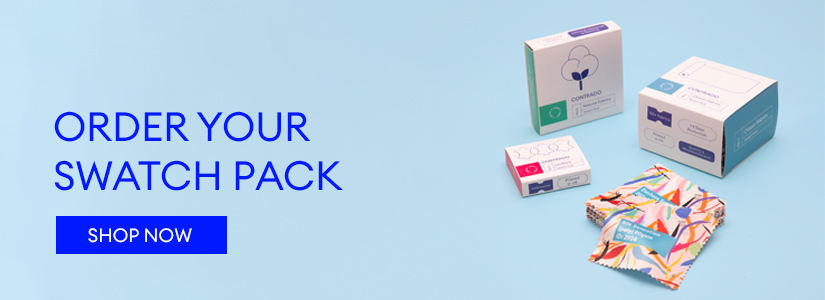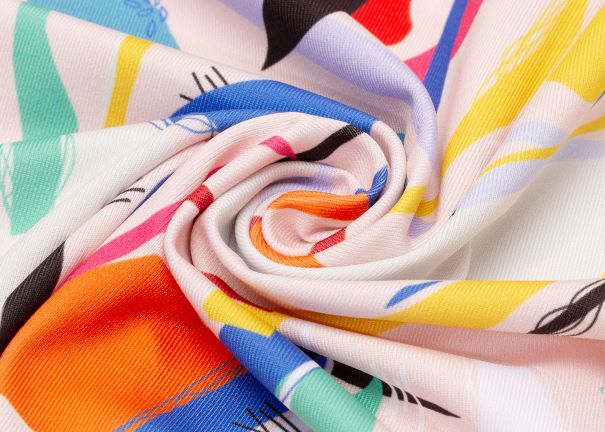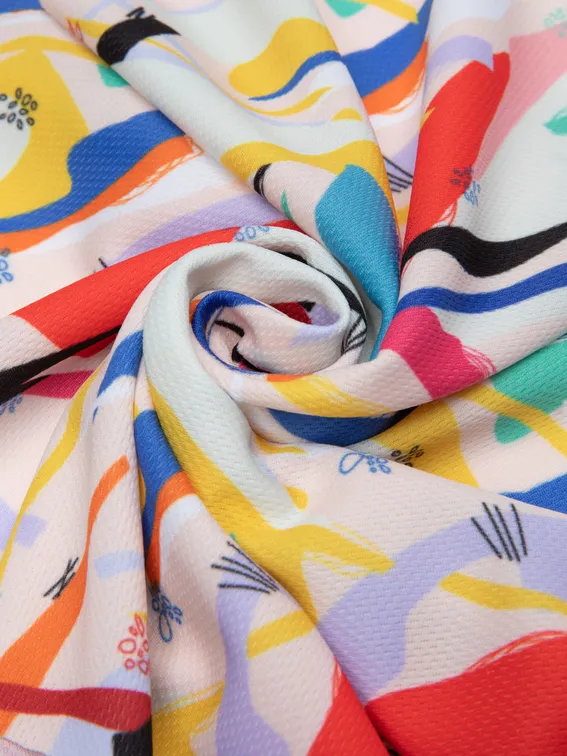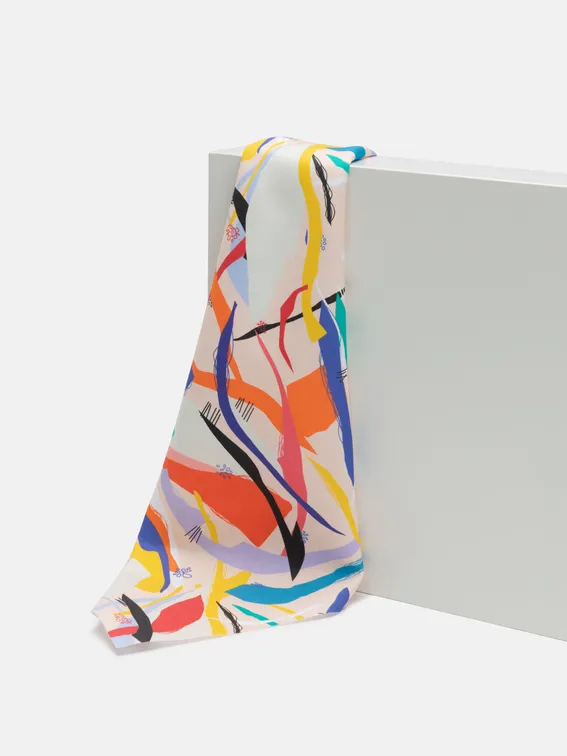What is tricot fabric, I hear you ask? I am going to explain it to you! Tricot is a generic term for any kind of warp-knitted fabric, that has been knitted in a tricot warp-knitting machine. The fabrics can range from very sheer and lightweight to opaque and heavyweight.
Its unique weave allows it to be smooth on one side and textured on the other. The run-resistant construction makes tricots the perfect fabrics to use when producing garments such as swimwear, lingerie, sportswear and more.
Examples of Tricots
- Airflow – poly-blend, pique knit, breathable, medium weight, tight-knit
- Boston Pique Knit – poly-based, pique knit, water-absorbent, stretchy, medium weight
- Chunky Knit Rib – closed knit, heavyweight, soft, stretchy, ribbed face, solid
- Power Net – fray-resistant, poly-based, open construct, lightweight, breathable, soft
- G-Mesh Net – poly-knit, stretchy, open-knit, airy, 3mm diamond-shaped holes, lightweight
- Matt Lycra – 85:15 poly: elastane ratio, soft, elastic, smooth drape, matt
- Soft Sheen Lycra – medium weight, resists pilling, moisture-wicking, shiny, soft, strong
How is it manufactured?
Tricot is a pain warp-knit fabric, made with a close-knit design, with the fibers running lengthwise while employing an interloped yarn pattern. Manufacturing this way means that on the one side (the face) you will see fine ribs running in a lengthwise pattern. You will notice, that on the other side (the back) the ribs run in a crosswise direction.
Two properties that make Tricot incredible are its run-resistance and a remarkable amount of stretch.
Purposes of tricot fabric
Thanks to their warp-knitted construction and close-knit, tricots have a sturdy, hard-wearing, yet comfortable handle. I recommend using tricot fabric for swimwear, lingerie and sportswear are what tricot is commonly used for.
The knitting process make these fabrics very sturdy, so they are often used as lining fabrics and also as backing materials for softer, less solid fabrics.
Properties of tricot fabric
Typically, tricot fabrics are characterized by vertical wales on the technical face and horizontal ribs on the technical back. Moreover, being stable textiles is what they’re renowned for. Working with them, they won’t unravel or ladder and are normally stretchy and comfortable. You’ll also find that they are low-cost. This combined with their stretch and stability, makes them a popular choice for backing fabrics for many kinds of laminate fabrics.
Advantages of tricot fabric
Tricots are remarkably sturdy and secure. These attributes mean tricot fabrics are often used as a lining material – both for items such as jewelry boxes, clothes, luggage and storage containers. In addition, great construction allows these materials not to billow or sag. Furthermore, you have countless options for garments with Tricot, because they can be made with so many different fibers!
How is tricot made? Well, originally, tricot was only made from silk, but the advantage of making them nowadays is that they can be made with a wealth of fibers. Options for you include; nylon, polyester, acetate, cotton, and viscose. Elastane can be included in the mix to add stretch. Get printing and create your design on tricot material for your next project.






I have a centennial sewing machine. it’s black and i believe it is a 1950 but i’m not sure because there are no letters before the serial number and there is no other writing on the machine. The serial number is 011329. I would appreciate if anyone could help me out establishing the correct date because i’m trying to get it sold asap. And i really need to know it’s value as well.